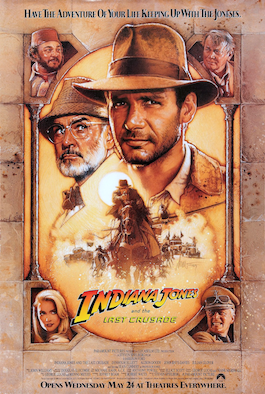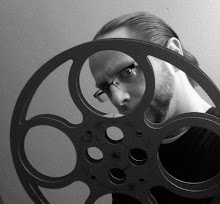Indiana Jones has faced many challenges in his four cinematic adventures. He has battled Nazi’s, Russians, and evil cults. He’s been dragged behind a truck, dangled off a tank, been poisoned, shot, and punched. He’s avoided snakes, bugs, rats, and booty traps. For his fifth and final trek, he faces the greatest enemy of all: time.
The year is 1969. Indiana Jones (Harrison Ford), is approached by his god-daughter Helena (Phoebe Waller-Bridge), to piece together the remains of Archimedes’ Dial; an ancient device with the ability to find fissures in time. Also seeking the device is former Nazi Dr. Jurgen Voller, who is looking to correct the mistakes of the past.
Directed by James Mangold, DIAL OF DESTINY dutifully and faithfully checks off the boxes needed for an Indiana Jones film. We have an ancient relic sought after by the goddamn Nazi’s, several trips around the globe, fistfights, gunfights, and chases around cities. The plot revolves around the Dial, which is broken in pieces and must be recovered before the bad guys can get there first. Underneath that, DIAL OF DESTINY has a lot of fun with its characters. Helena’s family has a history with Indy, and she is his polar opposite; not in the game for the love of archeology but for the money…just seeking the relic to pay off her debts. It’s a hard contrast that gives the film a lot of character.
While Indy is sparring with Helena and punching Nazi’s, he is also up against the brick wall of time. The concept of time and what it can do to us hangs heavily over the film. Indy is not the man he used to be no matter how hard he tries, and his place in the world which is passing him by is the opposite of his new enemy, Voller. Where Indy has succumbed to time, Voller is looking to change it. Mangold, along with Ford’s commitment to Indy’s age and mindset, finds new places for Indy to go as a character, and it is a grand refresh for a film franchise now in its 42nd year. It’s a film about holding on too tightly to the past, and it works very well.
Mangold has the immense pressure of taking over for Steven Spielberg, and does a decent job of it. Pacing is brisk and the banter is fun, and the action scenes range from okay to outright thrilling. Some scenes feel like they could have the tension ramped up more, and others feel like they need some breathing room. Pacing is a little un-even, but the film still moves along well and feels shorter than its hefty 154 minutes. John Williams’ score has new variations of Indy’s classic theme, and a new theme for Helena is excellent.
Visual effects, a hallmark for an INDIANA JONES film, are un-even. The outstanding, extended prologue that takes place in 1944 features a digitally de-aged Ford. Some of the effects are breathtakingly great, others not so much. Similar to its predecessor, DIAL OF DESTINY still has way too much green-screen going on to fill in backgrounds and environments, and many of the exterior scenes have an artificial look to them; not the best look for a franchise that was built on authenticity.
Harrison Ford puts in one of his best career performances here, taking Indy to some deeper, and surprisingly emotional places. Phoebe Waller-Bridge is a blast, and Mads Mikkelson is chilling. Boyd Holbrook comes in as Nazi henchman and is perfect. John Rhys-Davies reprises his old RAIDERS OF THE LOST ARK role and is a blast. Young Ethann Isidore appears as Helena’s sidekick, and although his acting is fine, the character is baggage.
Like previous Indy adventures, the third act and finale goes into some wild places, with this one pushing the realm of what we are willing to buy into for an INDIANA JONES movie. It may blow away the rules of logic, but it delivers on the rules of entertainment. After the final resolution, DIAL OF DESTINY then settles into a whopper of an emotional finale, which is un-expected and very well executed by Ford and all parties involved. It’s a capper on a film that needed over 40 years of experience to make, and sends Indiana Jones out swinging.
BOTTOM LINE: See it














